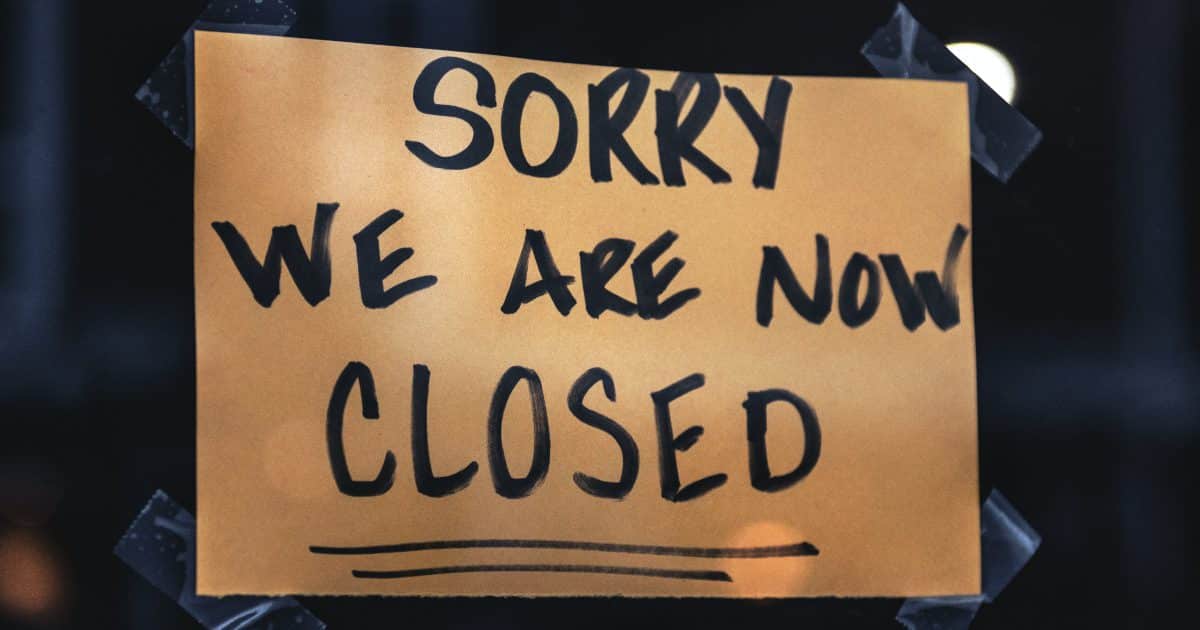How to build a business that can run without you
Are you micro-managing your team and, in doing so, ensuring your business can’t run without you?
All business owners, tax specialists included, pour their life and soul into the business and work hard to grow it.
But at a certain point, even though it is hard to let go – and it is your expertise your clients are seeking – it is important to be able to step away from the business and be confident the company can run successfully without you physically present to make every decision and answer every query.
If you do have your hand in every decision, you could well be, as many small business owners are, creating the bottleneck that is holding up your team and making your business less profitable than it could be.
Here are some ideas to think about if you would like your business to be less reliant on you:
1. Probably the first and most important step, as UK-based CVI Capital Group – a company that buys, grows and sells businesses – writes, is to let go of the idea that no-one can do it as well as you can. Just because someone may not do it the same way you do does not mean they won’t achieve the same outcome.
While many business experts say putting detailed processes and procedures in place helps any business, CVI Capital group say rather than focus on the process, it is better to focus on the result.
“Everyone has their method of thinking and their way of how they see the world. And that means they’ll always approach things in a slightly different way to you.”
2. The next step is to stop micro-managing your team. You need to trust them and empower them to make the right decision without always having to defer to your judgement.
Perhaps you initially put limits around the decisions they can make without referring it to you until both you and your team feel confident about the decisions that are being made.
Serial entrepreneur Richard Fertig, writing in Forbes, says he has committed himself to only doing things he wants to do; or that he is uniquely qualified to do.
“Those two things require me to: Create repeatable and scalable support infrastructure to run the daily operations.”
Essentially it seems the crux of your business being less reliant on you is to trust your team. Trust them to make the right decisions. Ask for their input, find out what processes work for them and what don’t. And ask them to help you find a solution (that doesn’t necessarily involve your input.)
How to diversify your business

The COVID-19 pandemic has honed many business owners' minds about what parts of their business can continue to provide revenue if the rolling lockdowns continue.
And it has undoubtedly had many business owners wondering how they can diversify their products or their markets to ensure the business remains afloat in both good times and bad.
Diversification can be about finding related products and services your existing customers may want, which will also allow you to target new customers, or it might be diving more deeply into what you already do.
Examples highlighted in the media at the time of the first lockdown included some up-market restaurants offering at-home catering for fine dining. Everything delivered to the door at restaurant quality.
Diversifying can even be as essential as selling your existing products and services online when you haven't done so in a serious way previously. Many business owners had to up their online presence markedly during New Zealand's Level 4 lockdown last year and may well have continued to do so.
As the National Australia Bank (NAB) notes, diversification doesn't necessarily mean developing brand new customer offerings or business streams.
“In many instances, adapting and modifying your existing products and services can increase their appeal to previously untapped target markets.
“That could mean launching a premium version of a product or service you already offer or, on the other hand, an entry-level one.”
Pre-COVID, a leading tourism business, started with small adventure tour groups, then diversified into family tours and educational tours and began providing accommodation for its customers. So, all related and within the same industry, but attracting a different type of customer.
Some things to consider about diversification
- Will the time and effort spent on your new/enhanced offering take all your time, and will your existing business/customers suffer?
- If you want to launch a new product, do you have the financial resources to undertake market research to see if it's what your customers want or to survey potential customers?
- Once you do source/start producing the new product or service, you need to market it to a new customer base, which again takes financial resources.
There are many ways to diversify, and it doesn't have to be a massive move.
Sometimes just dipping your toe delicately into the water means it won't cost you too much in either time or money, but it may be clear quite quickly if your new offering is the bright idea you hope it is.
How to sell your expertise (give it away)

Tax is a scary thing for most people, and, as a tax specialist, you will know better than anyone, just how many business owners are intimidated by the whole area.
As an expert in the field, it may help to educate both your existing clients and potential new clients on just how you can help them and where your expertise lies.
The more your clients understand your role, the more likely they are to value your services, and they may come to you for other avenues of help as well.
There are many ways to get the message out more widely about your expertise in your speciality field.
Here are six ideas to get you started.
- If you specialise in a particular industry, perhaps with many clients who are tradespeople, for instance, or if you have a good number of medical professionals on your books, seek out the local industry magazine (just about every single industry has at least one). Offer to write an article dedicated to their builder/plumber/medical readership on better ways to manage their tax. The publication is unlikely to pay for this contribution but usually includes a short bio about you, your business and your expertise.
- Blogging is an increasingly popular way to air your thoughts, your ideas and offer practical help. You can post the blog on your website and share it with colleagues in a related field to include on their websites or in their newsletter. You can repay the favour by hosting their blog on your website.
- Once that blog is written, you can include it in any regular newsletters you may send, and you can also share it on the social media platform for professionals, such as LinkedIn. With luck, some of your LinkedIn contacts will comment or share it, so you reach a wider audience.
- Podcasting is also an increasingly popular way to get your message out, and with some practice (and lots of YouTube help and advice), it can be a fun way to share your expertise.
- You can also sell your expertise through community forums. Contact your local business association (even better, become a member) and ask them if they have any upcoming events you could contribute towards and perhaps take a short-speaking spot in return for your support of the event.
- You could also host a one- or two hour-long evening seminar (with drinks and nibbles) for your clients who want to know the best things they can do to take control of their tax. Invite them to bring along any friends or colleagues who may also be interested.
Stretch your comfort zone slightly and let clients and potential clients know exactly how much you do know.
Why do some companies fail while others prosper?

“It's a funny market,” according to one business owner. “Some businesses I know are thriving, while others in the same industry are struggling just for cashflow.”
The truth is that perhaps it is less a ‘funny market’ and more symptomatic of the type of market we have here in New Zealand and, importantly, how we respond to that market.
Director of the chartered accounting firm and business advisors BetterCo in Auckland, Peter Prema, says that while media proudly refer to New Zealand as the easiest place in the world to start a business – according to the World Bank – it may be more a curse than a blessing.
“It is easy to start a business here, but perhaps it is one of the most difficult places in the world to run a business because our market is so small,” says Prema. “There are so many businesses just getting by.”
Not only is New Zealand small, but the ease with which anybody can start a business may be part of the problem because with it comes competition and sometimes a race to the bottom on price just to survive.
A study by Stanford University, Why Do Some Companies Thrive While Others Fail?, calls it ‘density dependence’.
Researchers Michael Hannan and Glenn Carroll write in their book, The Demography of Corporations and Industries, that “organisations' vital rates — their founding rates, growth, and mortality — depend on the total number of organisations within the relevant population”.
In biology, density dependence describes a situation in which “crowding, predators and competition curtail population growth”.
Perhaps we can look to the natural world – to survival strategies creatures adopt when there's too much competition for food, water and air – for one or two lessons about how to thrive in a country where there is too much competition and not enough customers.
Cannibalising
Hannan and Carroll refer to one phenomenon where businesses that are established cannibalise on the failures of companies that have gone under.
This may be taking over or buying out smaller businesses that are struggling (for their customers, intellectual property et cetera) or adopting any innovations those that failed may have brought to the market.
In some ways, it contradicts the statement that the New Zealand business environment is oversubscribed because it shows that companies need competition to learn and innovate. It also explains why some thrive, and others expire – it's the law of the jungle out there.
Competitive performance
Any ecologist will tell you that animals survive based on their performance while also relying on a bit of luck. There is a tendency by many SME owners to be head down producing the work – working in the business – instead of on the business. Those working on the business demonstrate ‘competitive performance’. They are primarily concerned with growing a company than with the nuts and bolts of what they do.
If they get enough sales, they free up cash and time to hire people to work in the business. Few do this because it is easier to get caught up in the nuts and bolts. Working in the business gives us a sense of accomplishment and certainty – although it’s a false sense of certainty – whereas working on the businesses exposes us to more unknowns and our lack of skills in some areas.
Ecological niche
In the animal world, a species will often niche to a specific environment. An ecological niche describes “how an organism or population responds to the distribution of resources and competitors and how it, in turn, alters those same factors”. In other words, animals adapt their behaviour according to the environment they are operating within.
For businesses, this could mean adopting a specific market niche (your new environment) and changing your behaviour (marketing, fulfilment, et cetera) to meet the particular market's needs.
Many businesses resist this because of the ‘fear of missing out’ (FOMO) – precisely because they say the local market is too small to niche.
The high number of business failures in New Zealand suggests that perhaps when you try to be ‘everything to anybody’, you end up being ‘nothing to nobody’.
How tax agents can kick the hourly billing habit

It doesn't matter how many times you hear this question; there aren't many other questions quite as capable of putting an expert practitioner on the spot like a butterfly pinned to a display cabinet than the dreaded: ‘What's it going to cost?’
For accountants, lawyers and others who sell their expertise, it sometimes seems the only measure of value is the clock, but time – unlike money – is finite and never an accurate estimate of an expert's value.
Hourly billing is something most clients – and experts – can understand. It is tangible and easy to grasp and sell because it doesn't put a price on anything (at least when you’re trying to win the client).
However, hourly billing is also widely disliked by both parties. It is not an accurate valuation of worth for the expert, and for the client, the final price remains a dreaded unknown. After all, how long is a piece of string?
The problem for many people who value their time by the hour is fear. They fear they may lose the client to somebody else who sets a tangible hourly fee, and they fear clients will become suspicious, or that there will be scope creep which leaves them out of pocket at the end of the day.
Unfortunately, the hourly bill also sets the expert up to be negotiated down and for limits to be set on a project's scope. It also opens them up to questions about how each unit of time was spent.
In essence, the biggest challenge to overcome with hourly billing is a change in mindset for both parties.
Base your value against objectives
Part of changing a client's mindset about project-based fees is to set expectations upfront.
Bestselling author Alan Weiss points out that clients know what they want, but they do not know what they need. As the expert in the relationship, your value-add comes from determining what it is they need.
Once you know the client's objective and – based on your knowledge of what they will need to get there – you are in a position to charge against a successful outcome across two or three scenarios. With most finance, tax and law-related issues, there will be varying levels of success. For example, a reduction in tax owed, or a write-off of tax owed or a repayment arrangement with the IRD.
The tax agent may spend the same amount of hours, give or take, in achieving one of those scenarios, but most people can agree that achieving a tax write-off for the client will be worth more to the client than a repayment arrangement with the IRD, and they'll be willing to pay accordingly.
Take an unrelated scenario, say in public relations. A multi-national operating in New Zealand may be under pressure from the media because they are accused of engaging in environmentally unfriendly practices. The local pressure is costing the company thousands, but globally the costs and damages are running into the billions.
The consultant, drawing on his or her expertise, may spend just two hours conceiving a strategy so successful, the multi-national rolls it out across the globe. Based on hourly rates, they would have earned a grand total of $600. Is that a true reflection of value?
Three things to consider
To shift your practice to a more value-added billing system, try these steps:
- Establish the client’s objectives. They may want the problem to 'just go away'. For example. letters of demand from the IRD. But what do they actually want? A repayment arrangement, a write-off of taxes, or a massive reduction in the debt?
- Using your expertise, determine what they need. What are the possible outcomes, from the worst-case scenario to the best-case scenario?
- Set your project-based fees against each scenario. For example, $900 for a repayment arrangement; $2000 for a partial debt write-off and a repayment plan or $4000 or a total write-off of the tax debt.
While every tax agent has an ethical duty to ensure the best possible outcome for clients, reality suggests that there will always be varying degrees of success. Charging against those ‘degrees’ of success may be a fairer outcome for all.
Finally, avoid seeing each client as a one-off problem to be resolved. Instead, view your first engagement as the start of a value-added relationship.
“As a professional engaged in providing service to your clients, the immediate urge may be to fix what ails the client. However, the long-term goals are best met by improving the client's condition.” – Alan Weiss
How to protect your cashflow in a time of personal crisis

Illusions of invulnerability – to feel somehow bulletproof – is often attributed to adolescents. In truth, more than 80 percent of the population have an optimism bias; we don't believe bad things will happen to us.
It is a luxury that business owners cannot afford to entertain.
Plagues may sweep the world. Our friends and colleagues may collapse with heart attacks, strokes, brain aneurysms and other horrible things, but somehow, most of us believe 'it won't happen to me'.
Professor and Cognitive Neuroscientist at the Department of Experimental Psychology, University College London, Tali Sharot, says there is a tendency to overestimate our chances of experiencing good events in life and to underestimate our chances of experiencing bad events.
“We are more optimistic than realistic. Without optimism bias, however, we would all be slightly depressed,” Sharot says. “Optimism is not just related to success. It leads to success.”
While anticipating good things in the future and expecting the best is a good thing, the statistics tell us that six out of 10 men and five out of 10 women will experience a traumatic event in their lives.
For business owners who want to succeed through the ups and downs, positive thinking is a good thing, but not at the expense of being realistic.
It is better to take steps to maintain as much control of our lives and businesses as possible than to go through life merely believing that it is all under control.
How to do it
If you want to prosper and protect your cashflow and business just in case, embrace your optimism bias – but adjust a parachute to your back.
- Spread the responsibility
A business that relies on one key person is vulnerable at several levels, not least cashflow. If you struggle to take time off because your staff need you, it is time to loosen the reins and spread the responsibility.
One tactic may be to identify a key person – or even a junior partner – in the business and begin delegating responsibility to that person. Spread the load.
2. Take out insurance
Insurance can be a costly expense for a small business, particularly loss of income insurance. Life insurance will protect your family if you die; trauma insurance may help protect you and your business if you become incapacitated at some point – which is a far higher possibility than your dying.
Talk to your insurance broker about what options are best for you, but don't leave it to chance.
3. Build a business that can function without you
Self-employment, in many instances, is a risky business. While it may give you the lifestyle and the income you desire, you alone are vulnerable – not to mention that you will struggle to realise any value out of the business when it comes time to retire.
Aim to build a business that you can ultimately sell, which means it must be able to run independently of you. Policies, procedures, outsourcing and possibly hiring staff further down the line will be a necessary part of achieving a self-sufficient stand-alone business .
4. Explore passive income generation
Regardless of whether or not you sell expertise, services or products, you may be able to construct a process and portal – such as an eCommerce site – that enables sales to happen without direct input from you.
When talking about how to apply optimism bias correctly, Sharot uses the analogy of penguins jumping off a cliff in the expectation that they can fly.
“If you are an extremely optimistic penguin that jumps off a cliff blindly, believing you will soar like an eagle, you might find yourself in a mess when you hit the ground. But if you are an optimistic penguin who believes you can fly but adjusts a parachute to your back just in case things don't work out as you planned, you will soar like an eagle, even if you are just a penguin,” Sharot says.
Self-reliance key to surviving rolling snap lockdowns

The prospect of COVID-19 continuing to flare up around New Zealand and of alert levels being raised, even for between three and seven days, implies business owners could face a smattering of these disruptive, short-lived lockdowns for much of 2021.
For any businesses reliant on foot traffic and person-to-person services these short, but still brutish, shutdowns mean a severe brake on cashflow, with some hospitality businesses reportedly seeing virtually no revenue during Auckland’s three-day, Level 3 February shutdown (not counting the seven-day lockdown going into March).
There is Government relief in the form of the Resurgence Support Payment and businesses and organisations may be eligible if they experience at least a 30 percent drop in revenue over a seven-day period after an alert level increase.
And yes, much can be done online and many retailers and other service providers have upped their online game considerably since our shutdown in March last year. But any ongoing threats also mean customers may defer buying decisions as they wonder about their own financial future.
Ultimately business owners must rely on their own resourcefulness. Here’s five ideas to help with your revenue streams.
- During any future rolling lockdown, now would be a good time to resume, even briefly, the protocols you started during our six-week lockdown last year, and let your customers know you are still operating and are there for them. If you are a gym, a dog trainer or physiotherapist, resume those Zoom training sessions at a reduced rate; if you make special occasion cakes, send out social media posts and offer a ‘lockdown’ special for the next three days with contactless delivery.
- As Heartland Bank advised its business customers: It could be a good time to focus on your past accounts due. Pick up the phone and start talking to your debtors. In a cashflow crisis, every cent counts.
- Talk to your customers. Contact them by email, phone, through social media posts – ask for their support in any way possible. Create gift vouchers, with no expiry date, this seems to have been useful for some hospitality and retail businesses, particularly in suburban areas. People want to see their local businesses continuing to thrive.
- And let your customers know you care about them. They may be having their own financial difficulties and offering them your support will stand you in good stead in the longer term.
- Communicate with your staff. They too will be worried and your leadership can help allay their fears. As the training organisation Skills recommends: “Ask for their opinions, you may be surprised with some of the solutions they come up with”.
As Prime Minister Jacinda Ardern says, above all be kind – it’s actually good customer service advice. If you are, and offer your customers help and understanding, when this is all over (and it will be at some stage) you may well have a customer for life.
How to design a business process

Dan Robbins died last year, aged 93, and you've probably never heard of him.
You will, however, understand his relevance to business processes when you learn that Robbins invented the famous paint-by-numbers kits during the 1940s.
Dan himself took inspiration from Leonardo da Vinci, who used number patterns to train his apprentices. If da Vinci could turn out master painters using a simple paint-by-numbers process, imagine what heights of success business processes could take your business.
A business process – defined by some as “a collection of linked tasks which find their end in the delivery of a service or product to a client” – is nothing more than a paint-by-numbers system that staff and contractors can follow to achieve a consistently desirable outcome.
You may wince at the thought of writing up business processes and procedures. It is another task to add to the list when most business owners and leaders are already overwhelmed.
Still, a company cannot afford to be without them.
Why have processes and procedures?
- They allow the business to function independently of you when you are away, sick or otherwise occupied.
- It negates the need to repeat yourself multiple times. The steps are in black and white, making it easy for staff to follow.
- Delivers a consistent result every time and reduces the risk of misinterpretation and distortion.
- Reduces room for mistakes and errors, including within the overall system.
- Improves efficiency by eliminating time-wasting detours and confusion.
- New staff can get on with the job after a relatively brief induction.
- Improves the saleable value of your business because the new owner can pick up the reins.
What must the processes include?
Processes and procedures allow for the consistent completion of tasks and increase your business's chances of achieving its goal.
However, they are more than just steps towards an outcome.
When designing a process, consider these questions:
- What tangible outcome should be achieved?
- What is the overall goal of this task, and how does the task contribute to the goal?
- How does the process incorporate your organisation's business philosophy as it applies to the task or goal?
Apply the paint-by-numbers methodology
Once you understand the task's context, you can map out the steps that you and your staff need to follow to get the result.
A fair process or procedure should, in so far as possible, reduce the need for guessing, questions, and even initiative – it is paint by numbers.
For example, a process to write an article may look like this:
- Write out the client problem, need or question you are trying to solve as your first paragraph. It should be a current problem that people are wrestling with right now. For instance, the cashflow squeeze from a provisional tax date over the January holiday period.
- In your second paragraph, state why this is a problem: It is the worst time to pay tax because cashflow is low, customers and staff are on holiday. No money is coming in.
- State why this will continue to be a problem: The provisional tax date is not going away, and failure to plan and budget – sometimes a year ahead – means every January will be a headache.
- In your next paragraph, offer two or three tips: Plan and budget ahead, diversify income sources to keep trading through the holiday period or talk to Tax Management NZ (TMNZ) about paying your tax for you.
- Finally, conclude with what you believe to be the best solution and why it is the best solution/ For example, you may be able to save yourself a headache by planning for your next January provisional tax date. Still, in the short term, TMNZ has you covered.
Anyone who follows this process should write an excellent article that is current (being relevant is where the company’s philosophy comes into play).
An article may not be a product of your company or business, but it is a 'product' or 'activity' that most companies would engage and therefore deserving of a process.
Processes and procedures should not be limited to your core tasks but cover every business facet – even blogging.
Are these two common business traditions losing you money?

The practice of throwing coins into a fountain – to invoke the favour of the gods – is so widespread that in some places they have notices asking the public not to toss coins into the fountain because it's terrible for the fish.
There are some modern business practices that amount to the same thing.
Historians debate about where the practice of tossing coins into a fountain started, or the reasons for it. On the one hand, experts claim it was to 'invoke the favour of the gods' (make a wish) as they did in Ancient Greece or 'to thank the gods for clean water' as they did in Ancient Rome.
In any event, the objective of the activity is to derive a benefit.
Regardless of the origins of the practice, it brings to mind two modern-day business traditions practised by New Zealand companies – all with some benefit in mind – but that potentially are no better than tossing money into a fountain:
- Leasing office space
- Waiting until a product or service is market-ready.
Expensive leases on office space
Until recently, leasing or buying expensive office space – once you outgrew your home office – was considered a natural next step for a business.
Part of the reasoning may be that a home office cannot necessarily accommodate a growing team and possibly doesn't present a professional image (depending on the business).
The COVID-19 lockdowns this year brought the realisation that expensive office space – and the obligations associated with occupying an office – as well as all the perceived benefits, may be more traditional than practical.
Something the traditional office does well, however, is that it brings teams together – it fosters culture and innovation.
An alternative, and less expensive option, to getting the best of both worlds may be moving into shared office space. A growing number of shared office space facilities offer companies (or individuals) options to hot desk, rent private office space on short term agreements or opt for a dedicated desk.
Décor, utilities and services are all taken care of, and best of all, nobody is locked into long, onerous and expensive office leases.
Product ready or market-ready
Another common practice is for businesses to wait until a new product or service is ready-packaged and in saleable form – before they take it to market.
Market ready is another myth that may result in opportunity cost. Holding fire deprives you of the chance to test the market, and is a drain on cashflow, time and energy long before you can expect a return on your investment.
As bestselling business author David Burkus wrote in the Harvard Business Review, new product launches are always a gamble but selling a product before it exists “looks like an effective way to stack the deck with minimum losses and maximise possible gains.
“It may not be the right strategy for every industry. But if it's possible, consider selling your new product before it exists.”
Back to the office? Not as you know it

Fresh out of lockdown in 2020, a lot of New Zealand companies were talking 'working from home as the new normal', but it hasn't exactly worked out that way, and a remote workforce is looking increasingly unlikely - or is it?
In July 2020 there were reports that the Auckland CBD economy would collapse due to the COVID-19 lockdown. In August, there were reports that an alarming number of shops in Wellington were boarded up – COVID-19 was speeding up the demise of the CBD which was already under threat from online shopping.
While many CBDs haven’t exactly bounced back with the spirit and energy of a child high on sugar, there are already signs that workers are returning to their city offices in growing numbers.
Heart of the City chief executive Viv Beck told Radio New Zealand in October that figures show people are returning to work in the city.
“The early spend data and pedestrian count information is showing that we are tracking quite positively overall. The domestic spending is picking up with more people back in the city, back at work and the return of events they're a significant attractor.”
How that compares to overseas
The Auckland experience is in alignment with studies overseas that have found that companies are bringing their staff back to the office, but with a bit more flexibility.
The October 2020 Vistage CEO Confidence Index survey of 1247 CEOs reports that even in the COVID-19 hit United States, 42 percent of CEOs are bringing employees back to the office. Twenty-eight percent will wait until 2021 – but return they will.
Some reasons why almost exclusively working from home may be short-lived is evidence that it leads to weaker controls, cybersecurity risks and a decline in innovation and company culture.
A growing response to the desire of more and more employees to work from home – less time stuck in traffic is a significant consideration – is the hybrid workforce model.
Defined as a blend of virtual and in-person work, the hybrid workforce model embraces the best of both worlds, and it seems to be gaining traction.
A recent Gartner, Inc. survey found that 82 percent of company leaders in the US plan to allow employees to work remotely, but only some of the time.
“Nearly half [47 percent] said they intend to allow employees to work remotely fulltime going forward. For some organisations, flex time will be the new norm as 43 percent of survey respondents reported they would grant employees flex days, while 42 percent will provide flex hours.”
In the UK, research by the Adecco Group UK and Ireland – Resetting Normal: Defining the New Era of Work study – reports that the majority (77 percent) of UK employees say a mix of office-based and remote working is the best way forward post COVID-19.
President and Country Head of the Adecco Group UK&I, Alex Fleming, says business leaders have a unique opportunity to hit reset on existing working patterns.
“Consider what, for instance, the new model of flexible working should look like. Crucially, these considerations should take into account what employees’ expectations are on these issues. Those businesses who welcome the new challenges and opportunities will be able to create working practices that will benefit both them and their employees for the long term, which will undoubtedly enhance colleague loyalty.”









